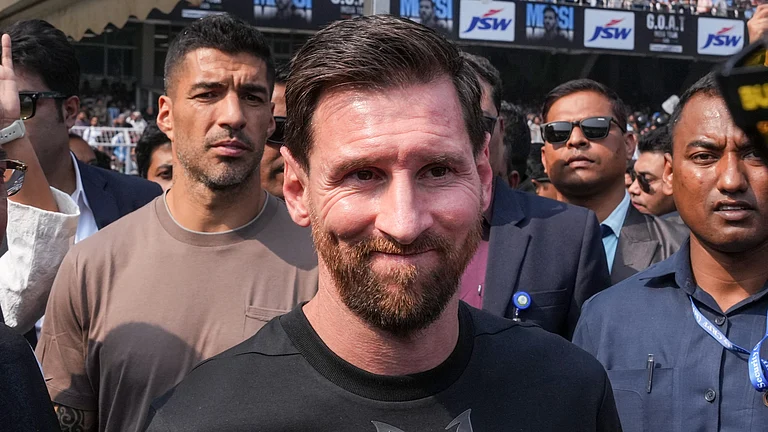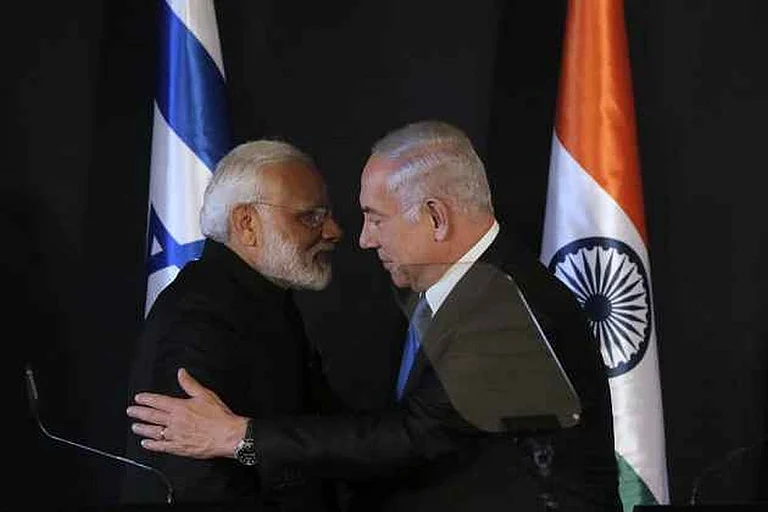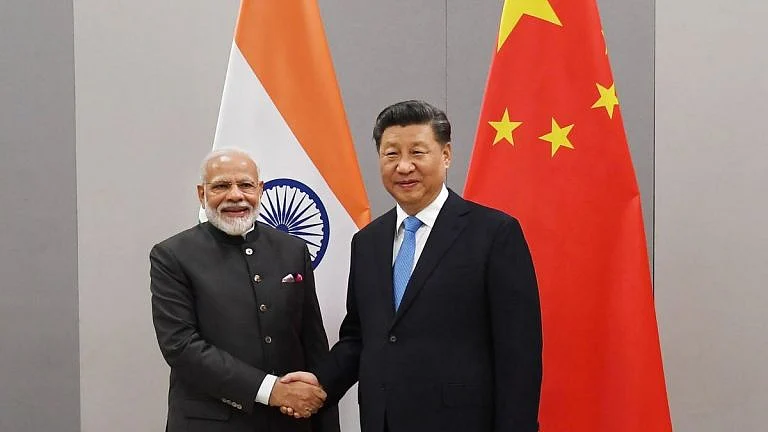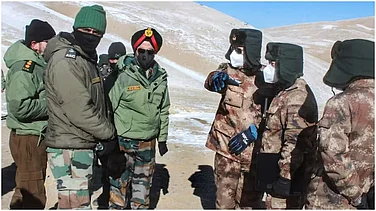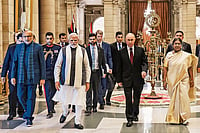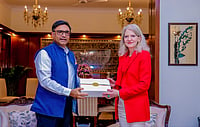A meeting between Prime Minister Narendra Modi and Chinese President Xi Jinping in Kazan was a given after the agreement on border patrolling was announced two days back. The meeting was the first formal bilateral meeting between the two since the 2020 face-off, though Modi and Xi had met at several multi-lateral forums.
At the end of the meeting on the sidelines of the BRICS summit, the two leaders agreed to resume bilateral engagements. The MEA said in a statement after the talks that Prime Minister Modi "underscored the importance of properly handling differences and disputes and not allowing them to disturb peace and tranquility. The two leaders agreed that the Special Representatives on the India-China boundary question will meet at an early date to oversee the management of peace & tranquility in border areas and to explore a fair, reasonable and mutually acceptable solution to the boundary question. The relevant dialogue mechanisms at the level of Foreign Ministers and other officials will also be utilised to stabilise and rebuild bilateral relations.’’
The decision to restart the Special Representatives talk to finally settle the border question is a positive move. Since 2019, the SRs had not met. Ajit Doval India’s National Security Adviser and Wang Yi, China’s long time senior foreign ministry czar are expected to sit across the table to find a permanent solution to the boundary issue.
"The two leaders affirmed that stable, predictable, and amicable bilateral relations between India and China, as two neighbours and the two largest nations on earth, will have a positive impact on regional and global peace and prosperity. It will also contribute to a multi-polar Asia and a multi-polar world,’’ the MEA statement said.
However these are tentative first steps and much ground has to be covered for bilateral relations to get back to the pre-2020 phase.
"The restoration of peace and tranquility in the border areas, will create peace, returning us to the path of normalisation,’’ foreign secretary Vikram Misri told at a news conference in Kazan at the end of the meeting. He also announced that "all bilateral mechanisms will be activated". It is a good start but much will depend on the follow up action.
"Crossing the hurdle to kick start talks at the highest level is not equal to a resolution of 2020 or the issues on the border. So I would not look for any miracles — for now we will get a broad general statement on the need to continue the dialogue and work towards improving the relationship. The exact nature of the agreement which has made it possible for this meeting to take place, is not yet clear.
Both sides have responded very differently and extremely briefly. More details may emerge—but that was sufficient to provide the basis for the preliminary understanding of the Modi-Xi meeting,’’ says JNU’s Alka Acharya an expert on China.
She adds, "but China and India are nowhere near a convergence on a vision for a collaborative or cooperative partnership in the near future."
In a way this is a major breakthrough. And, experts believe that BRICS leaders, especially Russian President Vladimir Putin would have played a substantial role behind the scenes. "If India and China are unable to talk, it would take the bottom out of BRICS and create a gaping hole in SCO as well,’’ Archarya adds.
China’s state-controlled Global Times has expectedly welcomed the agreement over patrolling, which was the last sticking point on Ladakh, with the other four issues having been resolved one by one. In an edit page commentary the paper said: "The return of the two countries' relationship to the right track aligns with the interests of both sides and is a common expectation among countries in the 'Global South'. In the face of a world filled with change and turmoil, China and India should uphold their independence and autonomy, choosing unity and cooperation. They should strive for mutual success and avoid exhausting one another. Hopefully the achievement of the resolutions can serve as a valuable opportunity to be cherished for both sides to address their differences in a pragmatic manner and find constructive ways to coexist correctly, thereby pushing China-India relations back onto a path of healthy, stable, and sustainable development.’’
India-China ties have always had ups and downs since the very beginning. The Hindi-Chini- bhai bhai in the early years of independence was followed by the 1962 border war. That defeat was a bitter pill for India to swallow and made even ordinary citizens suspicious of China. After Rajiv Gandhi’s visit to Beijing in 1988 the ice was broken and for a while the two Asian neighbours appeared well on the way of resetting ties. But from time to time, the PLA pushed across the LAC to grab what India said was its territory. The India-China boundary dispute has not been resolved despite several rounds of talks. Much of the push and pull is because the border has not been distinctly marked as China refuses to abide by the McMahon Line, named after the British officer responsible for running a line to demarcate the boundary has never been accepted by China.
Till the 2020 military confrontation Modi-Xi appeared to share a good bonhomie, with the Chinese leader visiting India a few months after Modi took office in 2014. Modi added a personal touch by inviting him to his home state of Gujarat and showing him around Ahmedabad. The official talks however took place in Delhi. In May 2015, Xi reciprocated the gesture by welcoming the Indian Prime Minister to Xi’an his home town before flying to Beijing for official meetings.
But things went sour in 2017 with Doklam. It was a reality check. For over 70-days neither side blinked. The Wuhan informal summit took place in April of 2018. The second in October 2019 was in Chennai. In the summer of 2020, however the military confrontation between India and China broke out and political relations took a big hit.










